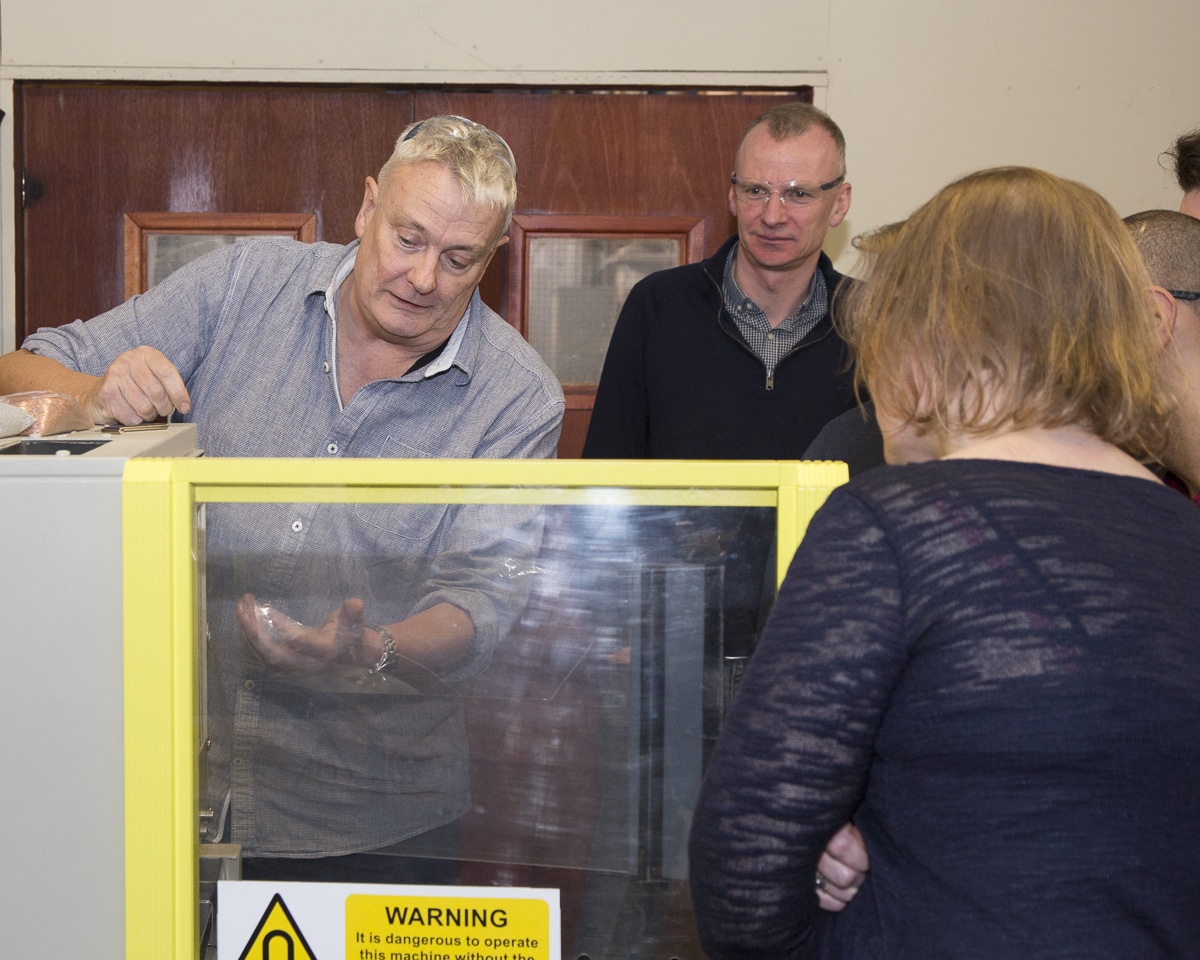Paper Abstracts for Physical Separation Conference
By Paul Fears | 12 June 2019
The Physical Separation ’19 conference
The physical separation conference organised by Minerals Engineering International (MEI), is held at the National Maritime Museum in Falmouth, Cornwall, United Kingdom on the 13th and 14th June 2019. The conference focuses on the application of physical methods to separate and concentrate minerals. At the conference, Dr Neil Rowson will be presenting two papers on behalf of Master Magnets.

Dr Neil Rowson discussing mineral separation at the Master Magnets laboratory in Redditch, UK
The abstracts of each paper are as follows:
Recovery of niobium minerals from slimes by gravity and magnetic separation
R. Li, M. R. Lepage, O. Kokkilic, K.E. Waters (Department of Mining and Materials Engineering, McGill University), N.A. Rowson (Master Magnets)
Abstract
Niobium is an important element that has been applied in many cutting-edge applications. Currently, its beneficiation is through froth flotation, although the fines are lost as slimes, comprising up to 15 % of the total niobium content. Recent works have shown that gravity and magnetic separation are effective at processing niobium-bearing minerals. However, studies using these techniques in the ultrafine range (below 10 µm) are still limited. This work investigated the feasibility of using enhanced-gravity and magnetic separation techniques to extract niobium-bearing minerals (columbite and pyrochlore) from industrial slimes containing gangue such as dolomite. The results from magnetic separation were then related to the magnetic properties of each individual mineral
Processing of a rare-earth ore by gravity and magnetic concentration
C. Marion, J. Paris, K.E. Waters (Department of Mining and Materials Engineering, McGill University), T. Grammatikopoulos (SGS Canada Inc), N.A. Rowson (Master Magnets)
Abstract
The Nechalacho rare-earth element (REE) deposit is located in the Northwest Territories, Canada. The main rare-earth minerals (REM) in the deposit are zircon, allanite, bastnäsite, synchysite, monazite, columbite (Fe) and fergusonite; with quartz, feldspars and iron oxides accounting for most of the gangue. Recent studies have demonstrated the potential for early gangue rejection, of a relatively coarse feed, using a spiral concentrator, prior to fine particle gravity separation using a Multi Gravity Separator (MGS) to produce a concentrate which comprises primarily REM and iron oxides. These studies were, however, limited in scope, with each technique tested separately and only demonstrated a proof of concept. This study looks to expand upon this work by investigating a complete flowsheet incorporating early gangue rejection at coarse particle sizes, followed by fine grinding of the pre-concentrate and fine particle gravity separation. The final gravity concentrate is then further upgraded using magnetic separation to separate the valuable REM from the iron oxide gangue. The products produced at each stage are analyzed by QEMSCAN to identify the effect of particle size, mineral liberation and association characteristics and mineral particle specific gravity distributions. The results from magnetic separation are related to the magnetic properties of the individual minerals, based on literature and vibrating sample magnetometer (VSM) measurements.
For further information on Master Magnets and our range of magnetic separation equipment designed for mineral processing, please see us at the Physical Separation conference or contact us via:
Email: press@buntingeurope.com
Telephone: +44 (0) 1527 65858
Follow us on social media




